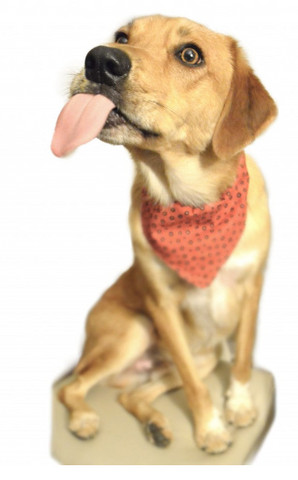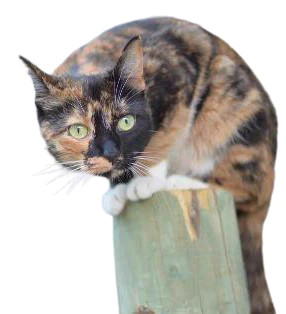Imagine a world where your feline friend can enjoy the great outdoors on their terms, while you maintain complete control over who enters your home. Welcome to the world of Electronic Cat Doors, a revolutionary solution designed to offer both you and your beloved cat unparalleled convenience and security. These advanced pet doors utilize cutting-edge technology to ensure only your cat can pass through, keeping unwanted animals out and providing your cat with the freedom they deserve.
What truly distinguishes electronic cat doors is their selective entry capability, making them perfect for multi-pet households or areas with neighborhood strays. Picture this: your cat can freely explore the garden, while you have peace of mind knowing that neighborhood cats or other critters can’t simply wander into your house. This level of control is made possible through various activation methods like RFID and microchip technology, tailoring access specifically to your cat.
The market offers a diverse range of electronic cat door styles to seamlessly integrate into your home. From classic door and wall-mounted options to innovative inserts for sliding glass doors, there’s a solution for every home design. Many models feature motorized flaps, a fantastic benefit for older cats or those with mobility issues, allowing for effortless entry and exit. While options specifically designed for larger dogs are available, the focus for feline companions remains on creating safe and accessible passages tailored to their size and needs.
Electronic cat doors employ a variety of electronic key systems to match different preferences and lifestyles. Vet-implanted microchips offer a collar-free solution, providing a permanent and secure identification method. Alternatively, RFID collar tags are lightweight and easy to manage. While less common in cat doors, magnetic and ultrasonic collar keys also exist, each with its own set of considerations regarding power and practicality.
Choosing an electronic cat door is about more than just ease of use; it’s a significant step towards enhancing your home’s security and your cat’s well-being. Many models offer customizable access control, allowing you to manage entry and exit permissions as needed. This not only keeps unwanted animals like raccoons out but also provides an added layer of security for your home. For cats who might be hesitant or have arthritis, motorized electronic cat doors provide the ultimate ease, opening automatically as your cat approaches.
Powering these doors is adaptable to various home setups. Some electronic cat doors are designed to be power-free, relying on magnetic mechanisms. Others operate on batteries, AC power, or a combination of both, ensuring continuous functionality. Regardless of the power source, the primary goal of every electronic cat door is to enhance your cat’s freedom and comfort while providing you with valuable peace of mind.
Investing in an electronic cat door is a commitment to your cat’s happiness and your home’s security. Like any technology, it’s wise to consider potential factors such as battery life and initial cost. However, the advantages – improved security, selective access, and convenience for your feline companion – make electronic cat doors a worthwhile upgrade for any cat-loving household.
Step into the innovative world of electronic cat doors and discover how advanced technology can create a more comfortable, secure, and effortless experience for both you and your cherished cat.
Frequently Asked Questions About Electronic Cat Doors
Some electronic pet doors control access from outside only, while others are controllable from both sides. What difference does this make for a cat door?
For most cat owners, one-way access control (allowing entry only) is perfectly sufficient. However, two-way control in an electronic cat door offers advantages in specific situations:
- Keeping Indoor Cats In: If you want to prevent your indoor cat from venturing outside, two-way control can be beneficial.
- Raccoon Prevention: Raccoons are known for their cleverness and have been observed manipulating one-way electronic pet doors by hooking the flap and pulling it open from the outside. Two-way control can offer enhanced raccoon resistance.
Do you have electronic cat doors that can keep out raccoons, squirrels, and stray cats?
 Raccoon near electronic cat door
Raccoon near electronic cat door
Yes! For optimal protection against unwanted animals, you’ll need an electronic cat door with two-way access control, regulating both entry and exit. Many basic electronic cat doors only control entry, which can be less effective against determined intruders like raccoons.
Excellent raccoon-resistant electronic cat door options include models like the PetSafe SmartDoor Connected Pet Door, Cat Mate Elite 305/306, PetSafe Microchip Smart Door, and High Tech Power Pet Door. These models are designed to effectively keep out raccoons and stray animals, providing greater security for your home.
What is the difference between motorized and non-motorized electronic cat doors?
Motorized electronic cat doors always offer two-way control, whereas non-motorized versions can be either one-way or two-way. The primary advantage of motorized electronic cat doors is their ease of use, particularly for timid, arthritic, or injured cats. These doors open automatically as the cat approaches, eliminating the need for the cat to push the flap.
While motorized models offer convenience, some believe non-motorized, push-flap electronic cat doors might be slightly more effective at preventing a second pet from quickly following the first one out. The swinging flap in push-flap models could act as a deterrent. Additionally, manual flap systems can function in a non-electronic mode, while motorized electronic cat doors always require electronic operation.
What are the power requirements for electronic cat doors?
Power requirements for electronic cat doors vary:
- Power-Free Magnetic Doors: Some magnetic cat doors require no external power source for either the door or the collar key.
- Battery-Operated: Many electronic cat doors run solely on batteries.
- AC Power: Some models operate using AC power and require a nearby electrical outlet.
- AC Power with Battery Backup: Certain advanced models, like the Hi-Tech Power Pet, offer AC power operation with a battery backup for uninterrupted function during power outages. Some models can also be hardwired by an electrician.
What are potential problems with electronic cat doors?
While electronic cat doors offer numerous benefits, it’s important to be aware of potential issues:
- Reliability: Electronic components introduce more potential points of failure compared to manual pet doors. If a manual door suffices, it might be a more reliable option.
- Battery Issues: Battery-operated electronic cat doors can experience unexpected battery depletion, potentially locking your cat out or in. Lack of a battery level indicator can exacerbate this issue.
- Cost: Electronic cat doors, especially motorized versions, generally cost more than manual pet doors. Replacement collar keys or tags can also add to expenses.
- Rigid Flaps: All electronic cat doors utilize rigid flaps. Some pet owners prefer flexible flaps for safety and comfort, although motorized electronic cat doors minimize pinching risks associated with rigid flaps.
- Insulation and Energy Efficiency: Some electronic cat doors, particularly direct approach models, may lack tight seals or weather stripping, potentially leading to air leaks and reduced energy efficiency compared to some non-electronic, energy-efficient pet doors.
What does “two-way control” mean in an electronic cat door?
“Two-way control” in an electronic cat door signifies the ability to regulate access in both directions – entry and exit. This advanced directional sensing system prevents unwanted animals like raccoons from entering and can also be used to keep your cat indoors when needed. Two-way control is particularly useful for preventing both unwanted intrusions and escapes. Models like the PetSafe Smart Door, High Tech, and Cat Mate 305/306 are recommended for two-way control functionality.
I want my dog to use the pet door, but not my cat. Is there an electronic pet door for this?
The PetSafe Electronic Smart Door is designed to provide selective access for dogs, preventing cats from using it. This functionality is ideal for households with both cats and dogs where you want to control outdoor access for only one species.
How is the PetSafe Electronic Smart Door powered?
The PetSafe Electronic Smart Door is powered by “D” cell batteries (not included). It’s worth noting that this model lacks a low battery indicator, so keeping a spare collar key nearby is recommended for testing battery levels periodically.
How large are the collar keys for different electronic cat doors?
Microchip electronic cat doors eliminate the need for collar keys as the microchip is implanted. RFID tags are generally small and lightweight as they don’t require batteries. Battery-powered collar keys are bulkier to accommodate the battery.
What is the largest electronic cat door available?
For cats, size is generally less of a concern. However, if considering larger pets as well, the PetSafe Smart Door and the High Tech Power Pet Door are among the larger electronic pet door options available.
Can I get a microchip cat door for a larger cat breed?
Microchip electronic cat doors are primarily designed for average-sized cats and smaller pets. Currently, microchip technology range limitations prevent its effective use in larger cat doors or dog doors. For larger cat breeds or if microchip technology is not suitable, RFID collar-based electronic cat doors are a viable alternative.
Are there electronic cat doors suitable for patio doors?
Currently, options for microchip electronic cat doors specifically designed for patio panels are limited. For patio door installations, the High Tech Pet Door for Sliding Doors is a suitable choice. If a microchip electronic cat door is essential, installing a PetSafe SmartDoor Connected Pet Door into the glass panel with an adapter is an alternative solution.
Do magnetic locking cat doors require power?
 Magnetic cat door mechanism
Magnetic cat door mechanism
Magnetic locking cat doors that rely solely on magnets do not require any external power. However, electromagnetic electronic cat doors, like the Cat Mate 305 and Ideal “E” Cat Door, require batteries to power their electromagnetic locking mechanisms.
Which electronic cat door doesn’t require batteries in the collar key for cats?
The PetSafe Smart Door and similar RFID-based electronic cat doors generally use passive RFID collar tags that do not require batteries. These tags are activated by the door’s sensor, eliminating the need for battery replacements in the collar key.
What electronic cat door do you recommend for garage door installation?
For garage door installations, options like the High Tech Power Pet Door and PetSafe Electronic Smart Door are suitable, depending on your cat’s size and specific needs. Microchip electronic cat doors are not typically recommended for garage doors due to range limitations and cat size considerations.
What motion sensor cat door options are available?
While not strictly motion sensor-based, the High Tech Power Pet Automatic pet door functions similarly, opening automatically as your cat approaches. This model is available for various installations, including doors, walls, and sliding glass doors, offering a near motion-activated experience for your cat.
Why choose an electronic cat door that opens automatically without the cat pushing?
Motorized electronic cat doors that open automatically are ideal for cats who are timid, injured, older, or arthritic. These doors provide effortless entry and exit, eliminating the need for the cat to push or interact with a flap, making outdoor access hassle-free for cats with mobility limitations or hesitations.
Are there patio panel cat doors with two-way control?
Yes, the High Tech Power Pet Automatic Pet Door for sliding doors offers two-way control functionality, regulating both entry and exit. This provides enhanced security and control for patio door installations.
Which electronic cat doors offer rechargeable battery options?
The High Tech Power Pet Door is notable for offering a rechargeable battery option. This feature simplifies installation and maintenance, making it a convenient choice for many cat owners.
Do all electronic cat doors have low battery indicator lights?
Low battery indicator lights are not standard on all electronic cat doors. Typically, this feature is more common on smaller cat door models. It’s essential to check the specifications of individual electronic cat door models to determine if a low battery indicator is included.
Are rigid flaps on motorized electronic cat doors dangerous for cats?
 Motorized cat door flap retraction
Motorized cat door flap retraction
Rigid flaps on motorized electronic cat doors are generally safe for cats and children. These flaps are designed to retract and reopen if they encounter an obstruction, preventing pinching or injury. The motorized mechanism ensures the flap retracts if resistance is detected.
Is there a microchip cat door for sliding doors?
For sliding door installations requiring microchip technology, the High Tech Power Pet for Sliding Doors is a suitable option. While true microchip integration in patio panels is limited, this model offers electronic access control for sliding doors.
How many keys are included with each electronic cat door model?
| Model | Number of Keys Included |
|---|---|
| High Tech Power Pet Automated Pet Door | 1 |
| Ideal E-Cat Electronic Door | 1 |
| PetSafe Smart Door | 1 |
| PetSafe Magnetic Cat Flap | 1 |
| CatMate 254/256 | 2 |
| CatMate 259 | 2 |
| CatMate 305/306 | 2 |
| DogMate 259 | 2 |

